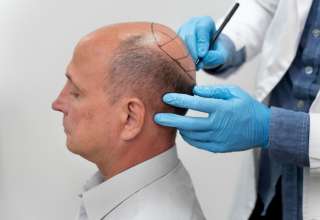Head injury is a very diverse term, and there are many different ways to explain it. When our head collides with something, there is a vast array of injuries that can occur to our skull, scalp, or brain. Moreover, an injury can also damage the underlying tissues and blood vessels. A head injury can also be known as TBI (traumatic brain injury), depending on the severity. TBI is often caused by severe head collisions and can be fatal.
Remember how our parents always used to tell us to keep our heads safe while playing in fields. There is a reason for this specific concern. Head injuries are the ones that are most difficult to deal with and is the leading cause of death in adults. So, we should always deal with head injury treatment with care, whether it is a minor bump or an open wound. Sometimes a concussion can lead to severe internal injuries, and results can be fatal.
Different types of head injury
To understand head injuries in detail, it is imperative for us to know the different types of it. Having adequate knowledge can help us perform head injury treatment with more precision. Hence the list below highlights some of the most common types that we usually encounter.
1. Concussion
You must have seen in fights how a strong punch causes a boxer to fall on the ground. The term KO or knockout is something that we can relate to concussion to understand it. A concussion is a head injury caused when your head collides with a hard object. This causes your brain to hit hard on the inner part of the skull. Such collision can result in loss of alertness for a few minutes or even hours, depending on the severity.
2. Skull fracture
A skull fracture is like other fracture injuries—the four major types of skull injuries are listed below.
- Linear skull fractures— It is the most common type where the injured person experiences a break in the skull bone. But, in such a scenario, the bone doesn’t move. In such a condition, some patients might have to spend some time in critical observation. Most of the time, there are no interventions in such cases.
- Depressed skull fractures —this type of injury needs surgical procedures for treatment. A part of the skull moves from its place and sinks in due to the hard collision. This type of fracture can happen with or without having a cut in the scalp.
- Diastatic skull fractures— This type of fracture is usually seen in infants. It is a skull injury that is linked to suture lines in the skull. In these conditions, the suture lines broaden up to the collision. A suture is an area that connects various bones of the skull together when we are young.
- Basilar skull fractures—This type is the most severe one. It involves a break in the bone at the base. Some patients might also experience fluid drainage from their nose or ears. Or they also might have bruises behind their ears and around the eyes. Such patients need critical observation under professional supervision.
3. Intracranial hematoma (ICH)
There are various types of blood clots in our brains. Each of them has a different location, and their names depend on their location. If the blood clots experience hard collisions, they can result in serious injuries. Hematoma is also a leading cause of fatal injuries.
Major Causes Of Head Injuries
Speaking about the causes of head injuries— there could be countless reasons. But the most common ones are associated with motor vehicle accidents. Apart from that, head injuries due to common violence such as child abuse are also prevalent here in the US. Besides that, brain hemorrhages are also common and can occur spontaneously due to taking immense mental stress.
The leading cause of head injury is damage to internal blood vessels and internal tissues. When our brain jolts back and forward due to a collision, it causes bruises called “Countrecoup Lesion. In adults, it can be a result of a motor vehicle accident or a fight. When the brain strikes the skull’s inner part, it might experience shear and tear of tissues. This internal damage to blood vessels may lead to internal bleeding, swelling, or bruising. Thus, it is always necessary to protect your head when playing outdoor games or riding a motorbike. The slightest collision can sometimes lead to fatal injuries.
Common symptoms of head injury
There could be many symptoms of a head injury, depending on the severity of the collision. Not all individuals experience the same symptoms, and it can vary from person to person. The most common symptoms may include:
The symptoms can be categorized into two main types.
- Symptoms due to minor injuries
- Symptoms due to moderate to severe injuries
Symptoms due to Mild Head Injury
- Dizziness or lightheadedness
- Confusion and Irritability
- Headaches due to bruises
- Nausea and change in sleep patterns
- Change of taste or tinnitus in ears
- Blurred vision or tired eyes
- Fatigue or lethargy
Symptoms due to moderate to severe injuries
- Repeated vomiting and nausea
- Severe headaches leading to unconsciousness
- Difficulty with walking and keeping body posture still
- Loss of memory and slurred speech
- Sudden behavioral changes
- Fluid transmission from nose or ears
Head injury treatment
The treatment of head injury depends on the severity of the wound and other conditions. Sometimes proper medications can do the job, and sometimes there is a need for surgical procedures. Patients might need critical observations and must be hospitalized if the case is severe. In all possible circumstances, immediate medical attention must be given, and not even a minor injury should be taken for granted.











